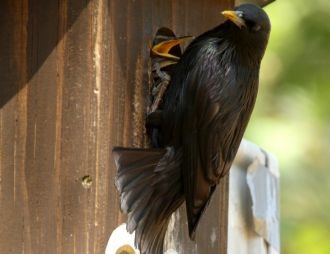
Bibliography
See all- 2021 Frontiers in Ecology and Evolution 9, article 658729 Reproductive strategies change with time in a newly founded colony of spotless starlings (Sturnus unicolor)
Flexible reproductive strategies in the spotless starling
Reproductive strategies are often considered a static species-specific characteristic. This is seldom the case, and if you look closely there is always some degree of variation. Different ecological circumstances may favour different strategies. We took advantage of changes in population dynamics caused by creating a new nest-box population to examine how polygyny changed with time in the spotless starling.
We found that levels of polygyny decreased from the first to the third year since the creation of the new nest-box population. In parallel, genetic parentage data showed that levels of intra-specific brood parasitism increased. This is likely due to an increase in competition for boxes and number of floaters. Males find it harder to become polygynous with increasing number of settlers of higher quality. This leads to an increase of monogamous pairs. Incoming females, on the other hand, resort to parasitism when unable to find a nest-box.
Quasiparasitism occurs when a female parasitizes the primary nest of the male that she has mated with. We found a few cases of these, which in a given case led to the parasitic female becoming the main female in the following year. This suggests that may be long term social links between these birds.
The study reflects the dynamic nature of mating strategies: flexible options that birds can adapt to changing ecological or social circumstances.
Diego Gil







